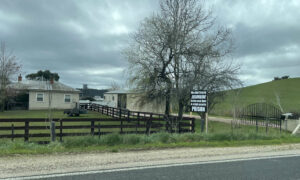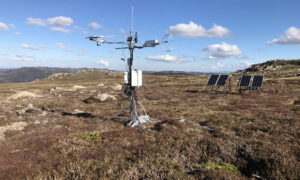Who loves a good mystery thriller?
There are many strange stories that emerge from the mists of olde Van Diemen’s Land, that island of suffering where convicts were dispatched by the British Empire, frequently for the term of their natural lives, where harsh discipline was meted out beneath the lash and in leg irons.
Two unsolved mysteries lingering on from the convict era relate to the Ross Bridge and have yet to be solved by a Sherlock Holmes in the field of historical investigation.
In this article those mysteries will be described for the reader to ponder.
THE DISAPPEARING BRIDGE
There were two convicts dispatched to Van Diemen’s Land, who both only just escaped the hangman’s noose in England and whose lives became entwined in the Ross Bridge.
One was the former ruler of Iceland, the Danish adventurer Jorgen Jorgenson and the other a stonemason, Daniel Herbert.
Jorgenson’s capital crime was remaining in England after he had been ordered to leave the country.
Herbert’s sin was highway robbery and we are very lucky he lived, as his hand has left us a very unusual legacy in stone.
In 1829 Ross had a wooden Bridge that needed replacing, so Lieutenant-Governor George Arthur commissioned the architect John Lee Archer to design a new stone bridge, with work commencing in 1830.
Convict gangs were set to work cutting stone, but this did not result in any bridge, as the local settlers saw it as their right to have first pickings of the convict labour to build their houses.
A couple of years before work on the bridge began, Jorgenson had found success in the Field Police, when he broke up a ruthless gang of sheep rustlers.
With good reason and hopes to get a bridge, the Colonial Government dispatched Jorgenson to Ross in 1833 to solve the mystery of the disappearing bridge, but the denizens of Ross erected a solid stone wall of silence around his best investigative efforts.
Under a cloud that he always claimed was fabricated, Jorgenson and his Irish convict wife Norah retreated from Ross along the road south to Hobart, a journey that was stalled for three months in Oatlands when his wife was arrested and jailed for brawling in the street.
Skullduggery resumed in Ross for a couple more years and still, no bridge appeared to cross the Macquarie River.
In the heat of frustration the Colonial Government dispatched a capable convict stonemason, Daniel Herbert, to work on the Ross Bridge, along with another convict stonemason, James Colbeck and both were offered their freedom upon its completion.
Working under the supervision of Captain William Turner, the disappearing bridge began to materialise at long last and was duly opened by the Governor to all traffic along the colonies main highway to the north in October 1836.
As if to trumpet finally building a bridge in Ross, the old wooden carriageway was blown up following the ceremony.
WHAT ABOUT ALL THE STONE CARVINGS?
The simple fact of the matter is, the stone carvings on the Ross Bridge, one of its main claims to fame, should not exist.
There are 186 carved voussoirs along both sides of the three arches of the bridge, which handsomely decorates a solid example of colonial stone engineering that has served well as a bridge for nearly two centuries.
According to a 2006 Engineers Australia report, this is the only example of a stone bridge in the World that includes carvings along all of its arches. [1]
The keystone of a bridge arch will sometimes host a carving, but never every voussoir of the arch.
It was simply never done.
One reason for this may have simply been that any carvings on the arches, located out over the water, would be too hard to see or admire.
Considering that completion of the Ross Bridge was years overdue, it is hard to imagine that any superintendent would risk the wrath of his superiors because of further delays caused by experimental and time-consuming decoration.
The Engineers Australia report further states that there is no record in official documents, reports, letters or diaries of this creative stone frivolity being approved or being made.
Considering how many official eyes would have been cast upon the convicts to ensure that work was proceeding, from carving the stones, to placing each voussoir into its place in the arch, it is as if the art of the Ross Bridge was totally invisible to the Government and public eye.
It was as if a wall of silence existed around the carvings on the bridge, just as impenetrable as the wall of silence met by Jorgenson.
The innovation of decorating the Ross Bridge with carvings could have been a celebration, trumpeted as a fine creative legacy, but instead the work proceeded under a mist of quiet like a fog upon the river.
It is known that Daniel Herbert is the artist of the Ross Bridge, who made and supervised the making of the carvings and continued to live in Ross until his death in 1868.
There are other examples of his stone art in the district, though nothing to compare to the river of creativity that flowed into that bridge.
Who approved the art on the Ross Bridge and why remains an unsolved mystery from colonial Van Diemen’s Land, along with the total official and private silence on the making of the art and its final completion and exhibition.
THE MEANING OF THE ROSS BRIDGE ART
In their 1971 book on the Ross Bridge, Leslie Greener and Norman Laird make the claim that the inspiration for the carvings on the Ross Bridge is Celtic art. [2]
This claim is reflected in all references to the art on the bridge, including the Australian Heritage Database, which states, “The unique features of the bridge are the fine carvings in high relief of animal forms, human heads and celtic icons by convict stone mason, Daniel Herbert.” [3]
That which we refer to as Celtic art today, in fact originates with the Saxons and later the Vikings when they settled in Britain, Scotland and Ireland.
The carvings on the Ross Bridge do not compare with any available example of Celtic art, whether from before the age of the Vikings, or since.
The Celtic art claim may only be resolved through a more careful study of the art of the Ross Bridge, to determine whether there was an ancient Celtic tradition that Herbert was drawing upon, or whether the carvings are the playful work of a very creative imagination.
There is also quite a fog hanging over what the carvings actually mean.
Some forms are recognisable and connected with vandemonians of the day, such as the king on the bridge being Jorgenson, who was popularly known as the ex-king of Iceland.
Most of the art of the Ross Bridge is comprised of mysterious flowing and writhing designs.
If the carved stones are not Celtic art, then the true origin needs to be identified.
A better understanding of Herbert’s creations could prove to be a boon to artists in their work, as with the Tasmanian artist Garry Nichols, now living in New York, who creates work inspired by the art of the Ross Bridge. [4]
As if to compound the mystery, there are no examples of the designs on the Ross Bridge found beyond its completion, even though Herbert continued to live in Ross for another three decades.
Carved heads and other works by Herbert can be found, but the designs remain unique to the bridge, as if some breach in time had delivered them from another dimension.
AN UNCELEBRATED TRIUMPH
Should Herbert’s hand on the Ross Bridge be seen as an act of defiance as bold as that of Ned Kelly, when the outlaw sought to be a dark knight in ploughshare armour and walked into Australia’s realm of mythic legend?
Or the doomed rebellion at Eureka that gave birth to the Australian flag?
Or the mythic ex-king of Iceland who walked in Van Diemen’s Land like a fallen demigod and found a home in stone amidst the wild imaginings of a stone artist?
However this stone art was born, from whatever spring of inspiration it was drawn, despite the oppressive silence surrounding its creation, the delivery of this solid statement of work must be seen as a form of rebellion, of defiance against a British Empire that hounded human life with whip and chain and shipped human cargo to far-flung islands to work as slaves.
Gaining a thorough understanding of the art of the Ross Bridge will be the best way to belatedly celebrate the work of Daniel Herbert and finally disperse the fog of silence surrounding the stones.
THE KING IN THE STONES
Anyone travelling through Ross in 1836 may have been obliged to walk across the rickety wooden bridge and as they passed the masons at work on the stones for the crossing, they may have recognised Jorgenson chatting with Herbert, sharing a yarn.
Jorgenson was a writer and avid walker who travelled around the colony, where his medical skills would have been in demand among the convict classes, as was his writing ability for submitting petitions.
As a Christian he was generous and despite all his failings, sought to live the talk.
The mason may have raised a question about Jorgenson’s three month stay in Tahiti, or sailing round the Horn, or that incident in Iceland when he was a king of the world for an hour.
That would have brought a glint to the old Danes eyes.
And Herbert may have studied Jorgenson to make the stone carving of the king on the bridge, as a careful examination reveals it as more portrait-like than any of the other carved heads.
As there is no known photograph of Jorgenson, or drawing and as the painting thought to be him has been shown to be another [5], Herbert’s king on the bridge may be the only known portrait of a fellow rebel from another age.
Kim Peart’s avatar called Van Demonian in the virtual world called InWorldz, where a display of the Ross Bridge art has been set out in the newly opened Tasmanian Heritage room at his island called Sprite, where people from anywhere in the world can visit and explore, like an Internet website, using an avatar.
NOTES
[1] Nomination for a NATIONAL ENGINEERING LANDMARK ~ REVISITED
by The Engineering Heritage Tasmania Engineers Australia July 2006 http://www.engineersaustralia.org.au/sites/default/files/Ross_Bridge_nomination.pdf
[2] ‘Ross Bridge and the Sculpture of Daniel Herbert’
Leslie Greener & Norman Laird, Fullers Bookshop, 1971
[3] Australian Heritage Database
Department of Sustainability, Environment, Water, Population and Communities ~
http://www.environment.gov.au/cgi-bin/ahdb/search.pl?mode=place_detail;search=place_name%3Dross%2520bridge%3Bkeyword_PD%3Don%3Bkeyword_SS%3Don%3Bkeyword_PH%3Don%3Blatitude_1dir%3DS%3Blongitude_1dir%3DE%3Blongitude_2dir%3DE%3Blatitude_2dir%3DS%3Bin_region%3Dpart;place_id=13164
[4] The website of the artist Garry Nichols
http://www.garrynichols.com/reviews.html
[5] Story in the Tasmanian Times revealing that the Eckersberg portrait is not of Jorgenson and also not an Eckersberg ~
http://oldtt.pixelkey.biz/index.php?/article/jorgy/
• Earlier Kim Peart on Tasmanian Times: Susannah’s Angel
and …
The meaning and significance of the carvings



























Nick
August 6, 2012 at 18:35
Thankyou for writing this illuminating article, and sharing a piece of our history.
Kim Peart
August 24, 2012 at 12:00
Sedja’s blog entry today is on the Ross Bridge and includes a link to the Tasmanian Times story ~
http://sedja.blogspot.com.au/
L.Prophet
May 11, 2014 at 12:49
From what I’ve read, Jorgenson was hated in Ross. The town turned against him because he was cruel. When he couldn’t get the better of the publican, he turned up one morning and killed 4 of his dogs in front of the whole family including children. Herbert engraved the dogs on the bridge. Think you should re-think the ‘importance’ of this man and his mad wife.
S. Sims
May 14, 2017 at 02:34
Daniel Herbert was my great great great etc. uncle, maybe not a coincidence that there are so many artists in my family. My grandparents have a book about him.
Kim Peart
May 14, 2017 at 11:31
Re: 4 ~ If in Ross, you are welcome to contact me. I have seen other stone carving in Ross, and wonder if it is by Herbert, though not attributed. ~ [email protected]
The Herbert’s stone cottage at 2 Badajos Street was sold in January, and I attempted to get an artist-in-residence project up for it, but it sold, and no success with that.
We discovered that the heritage listing used the wrong address, and so it wasn’t heritage listed, and this hasn’t been fixed, yet, as far as we know.